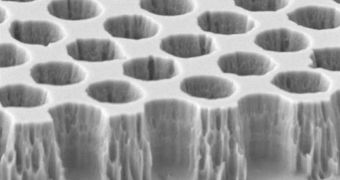A collaboration of experts in the United States has just finished developing the high-temperature version of photonic crystals, advanced materials that are used for numerous applications. The new constructs can function at temperatures of up to 1,200 degrees Celsius, opening even more applications.
The research team, based at the Massachusetts Institute of Technology (MIT), says that it used metals including tantalum and tungsten in order to develop the high-temperature photonic crystals. The materials could be used to power everything from smartphones and tablets to spacecraft.
At the same time, it may be possible to set the basis of a new class of infrared light sources, which could in turn be used to develop advanced sensors, and chemical or biological detectors. The latter could be used to provide additional security for airports and other public places.
This is not the first time that researchers attempted to create these improved materials. However, the new approach is simpler, inexpensive, more efficient, and also easier to implement at the large-scale. The investigation was led by MIT expert Ivan Celanovic.
He is also the senior author of a paper describing the research. The work appears in the latest issue of the esteemed journal Proceedings of the National Academy of Sciences (PNAS). MIT professors John Joannopoulos and Marin Soljačić were coauthors on the paper, too.
According to Celanovic, an MIT Institute for Soldier Nanotechnologies research engineer, existing technologies and equipment can be used to manufacture the high-temperature photonic crystals. Microfabrication techniques used for creating computer microchips should do the trick.
The expert adds that smartphones, mp3 players, tablets and other personal electronic devices could run up to 10 times longer using these materials as a power sources, as compared to existing batteries.
The same holds true for applications in solar-powered spaceflight, which is why the American space agency has already taken an interest in this research, encouraging the MIT team to move forward.
The Army Research Office's Institute for Soldier Nanotechnologies, NASA and an MIT Energy Initiative seed grant, sponsored the investigation. The US Department of Energy also contributed.

 14 DAY TRIAL //
14 DAY TRIAL //